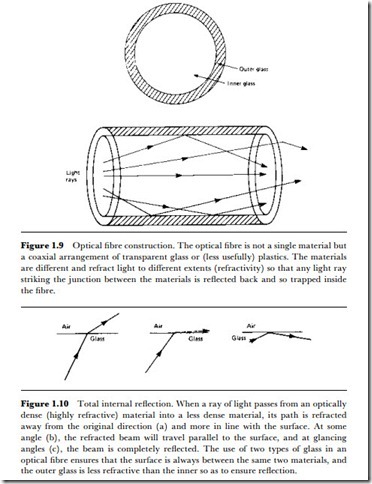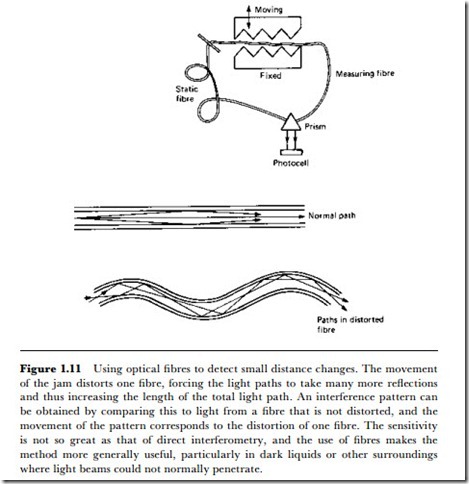Fibre optic methods
Developments in the manufacture and use of optical fibres have led to these devices being used in the measurement of distance changes. The optical fibre (Figure 1.9) is composed of glass layers and has a lower refractive index for the outer layer than for the inner. This has the effect of trapping a light beam inside the fibre because of the total internal reflection effect (Figure 1.10). V\hen a light ray passes straight down a fibre, the number of internal reflections will be small, but if the fibre is bent, then the number of reflections will be considerably increased, and this leads to an increase in the distance travelled by the light, causing a change in the time needed, and hence to a change in the phase.
This change of phase can be used to detect small movements by using the type of arrangement shown in Figure 1.11. The two jaws will, as they move together, force the optical fibre to take up a corrugated shape in which the light beam in the fibre will be reflected many times. The extra
distance travelled by the beam will cause a delay that can be detected by interferometry, using a second beam from an unchanged fibre. The sensor must be calibrated over its whole range, because there is no simple relation- ship between the amount of movement and the amount by which the light is delayed.

